Gooseberries may not be the most common backyard crop, but they certainly deserve a spot in your home garden. These small, tart-sweet fruits are packed with nutrients, brimming with flavor, and surprisingly easy to grow. With their charming arching branches, decorative foliage, and vibrant fruits ranging from green to red and even purple, gooseberries make a beautiful and productive addition to any outdoor space.
Whether you’re an experienced gardener or just starting out, this guide will walk you through everything you need to know about growing gooseberries in your backyard — from choosing the right variety and planting to pruning and harvesting your delicious homegrown berries.
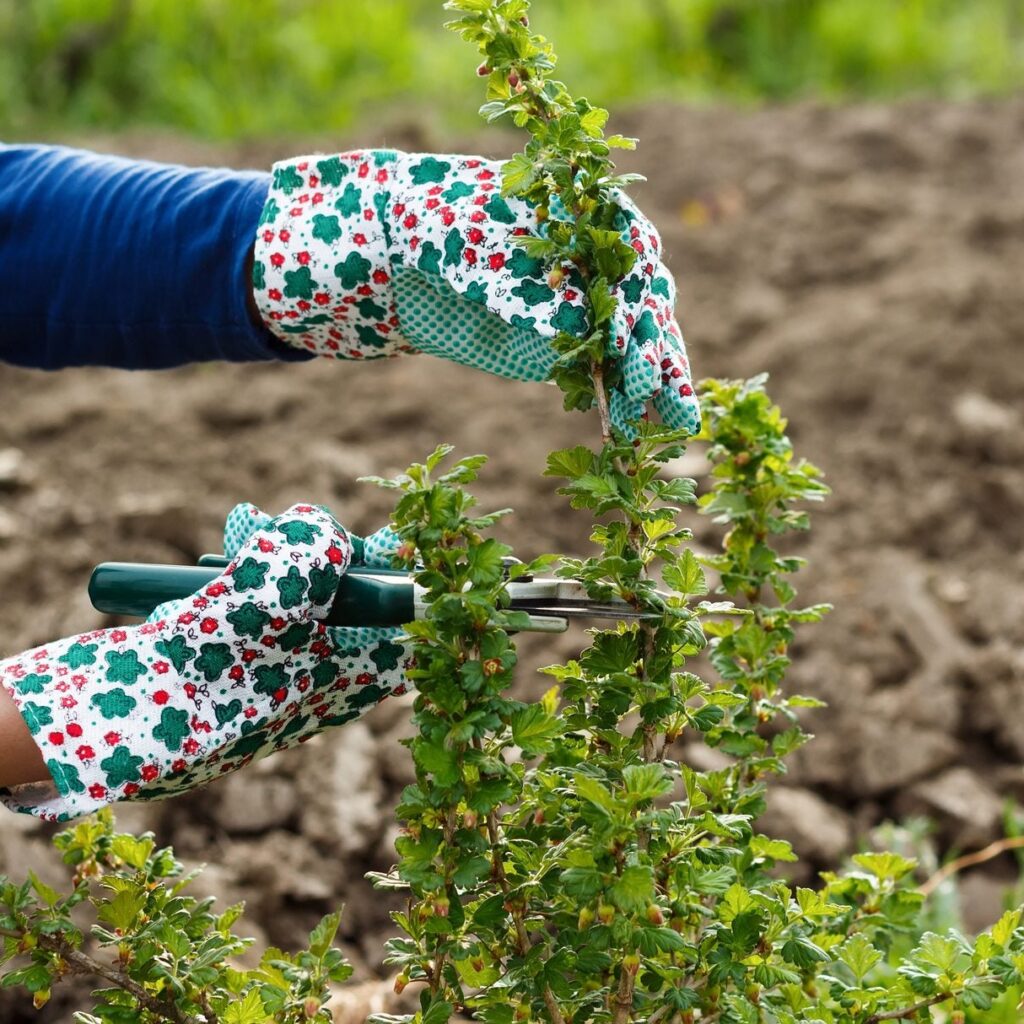
Why Grow Gooseberries?
Gooseberries offer several perks for home gardeners:
- Nutrient-Rich: High in vitamin C, antioxidants, and fiber.
- Easy to Grow: Adaptable to a variety of climates and soils.
- Compact Size: Perfect for small gardens, patios, or raised beds.
- Deliciously Versatile: Ideal for jams, pies, cordials, chutneys, and fresh eating.
They’re also relatively pest-resistant and can live for 15 years or more with proper care, making them a long-lasting garden investment.
Choosing the Right Gooseberry Variety
Before planting, select a variety that suits your climate and taste preferences. Gooseberries come in green, yellow, red, and purple shades, each with unique flavor profiles.
Popular Varieties:
- Invicta: Heavy-cropping, green-fruited variety with excellent disease resistance.
- Hinnonmaki Red: Sweet, tangy red berries with a dessert-like flavor.
- Captivator: Nearly thornless, pinkish-red fruits, and very sweet.
- Pixwell: Compact, hardy, pinkish berries, ideal for colder climates.
Tip: Choose disease-resistant, thornless, or nearly thornless varieties if you’re new to gooseberry growing for easier handling and care.
Best Time to Plant Gooseberries
The ideal time to plant gooseberries is in late fall or early spring while the plant is dormant. This allows the roots to establish before the growing season.
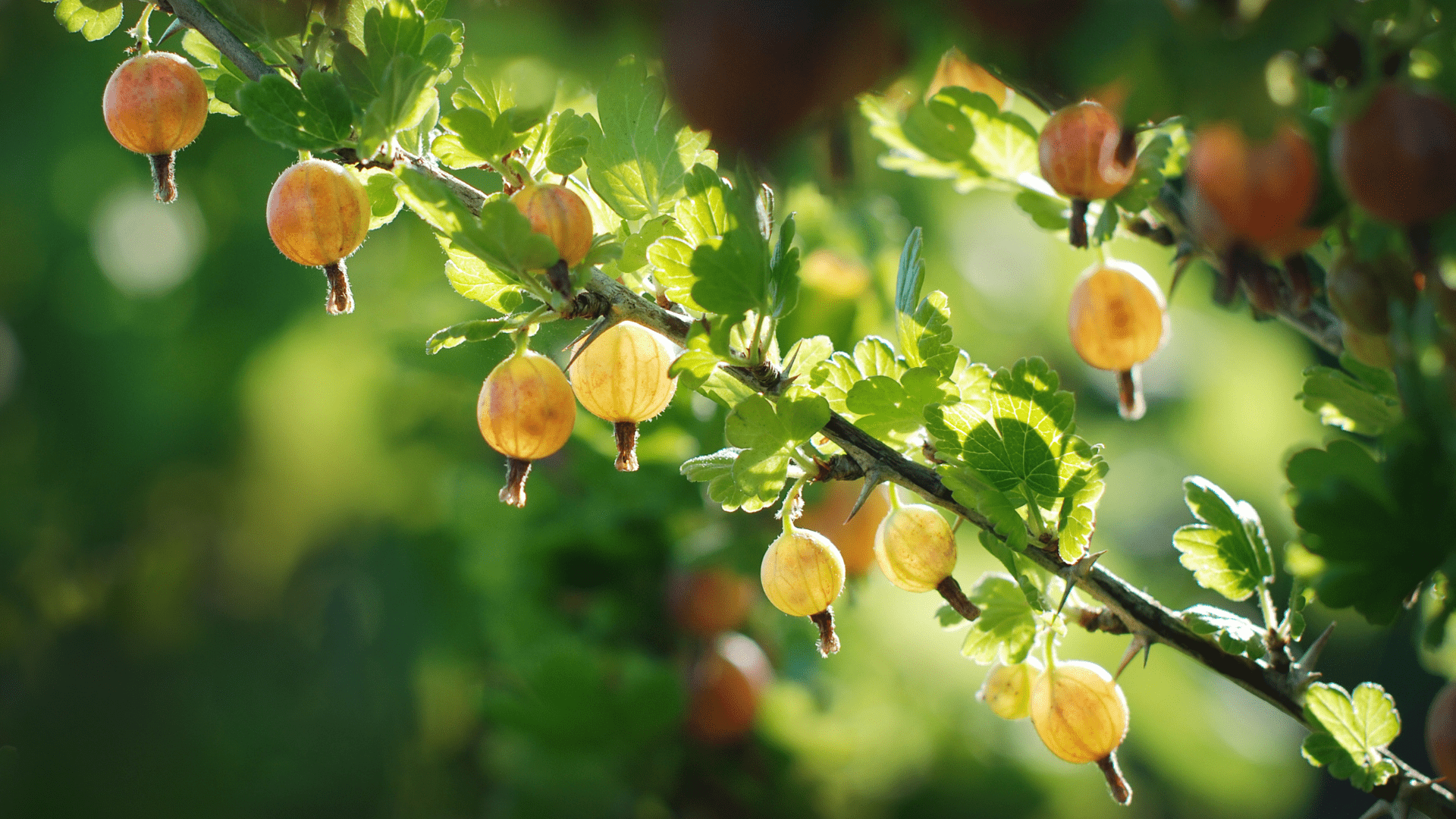
How to Plant Gooseberries in Your Backyard
Step 1: Select a Suitable Spot
Gooseberries thrive in:
- Full sun to partial shade. In hotter regions, some afternoon shade helps prevent sun scorch.
- Well-draining, fertile soil with a pH of 6.0–6.5.
- A location sheltered from strong winds and late spring frosts.
Avoid planting in frost pockets or areas prone to waterlogging.
Step 2: Prepare the Soil
Gooseberries prefer slightly acidic to neutral, well-aerated soil.
- Dig in plenty of organic compost or well-rotted manure to enrich the planting site.
- Remove stones, weeds, and debris.
- If soil is heavy clay, amend with grit or sand for better drainage.
Step 3: Planting Your Gooseberry Bush
- Dig a hole twice the width and depth of the root ball.
- Position the plant so the base of the stems sits 1–2 inches below soil level to encourage new growth.
- Spread the roots out gently.
- Backfill with soil, firming gently as you go.
- Water thoroughly.
Spacing: Leave 4–5 feet (1.2–1.5 meters) between bushes to ensure good airflow and reduce the risk of fungal diseases.
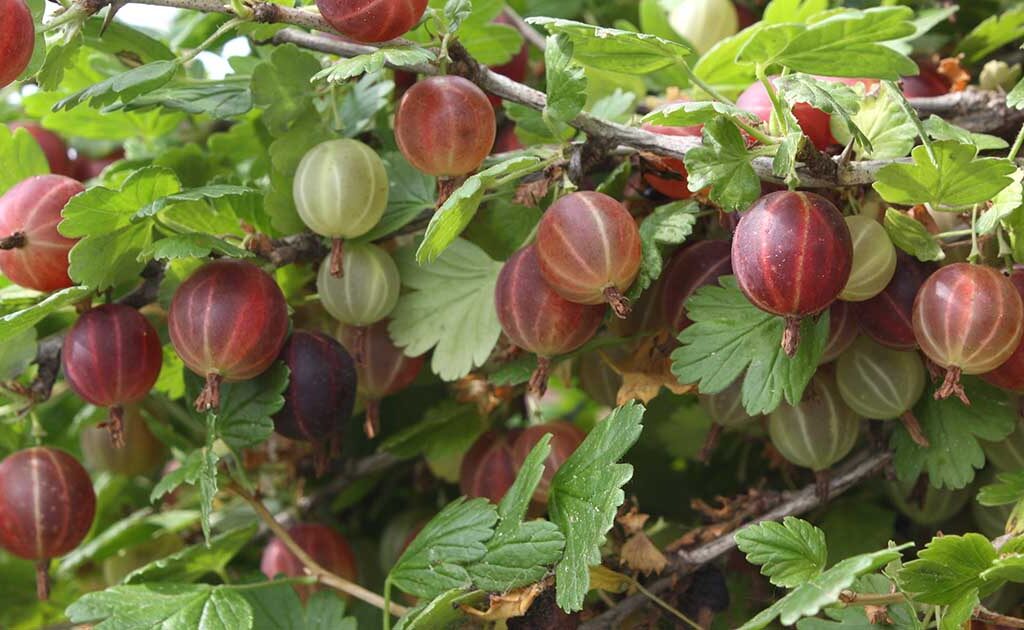
Caring for Your Gooseberries
Once planted, regular care will ensure your gooseberries thrive and produce heavy crops for years to come.
Watering
- Keep the soil consistently moist, especially during dry spells.
- Avoid waterlogging, which can lead to root rot.
- Water deeply to encourage deep root growth.
Mulching
- Apply a 2–3 inch layer of organic mulch (like compost, leaf mold, or straw) around the base of the plant.
- Helps retain moisture, suppress weeds, and improve soil structure.
Feeding
- In early spring, feed with a balanced granular fertilizer (10-10-10) or a high-potassium fertilizer to encourage fruiting.
- Top-dress with compost or well-rotted manure in autumn.
How to Prune Gooseberries
Proper pruning improves air circulation, reduces disease risk, and enhances fruit production.
When to Prune:
- Late winter or early spring before new growth starts.
How to Prune:
- Remove dead, damaged, or weak branches.
- Thin out congested growth to allow sunlight into the center.
- Aim for an open-centered goblet shape with 4–6 strong framework branches.
- Cut back side shoots to 2–4 buds from the base to encourage fruit spurs.
Tip: Wear gloves, especially with thorny varieties.
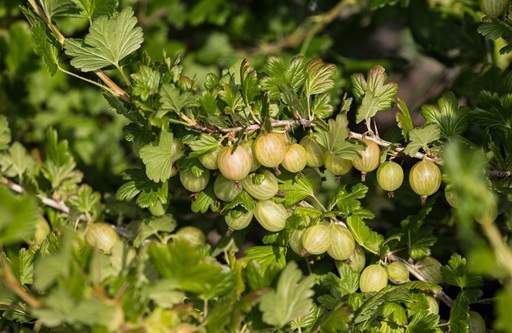
Common Pests and Problems
Gooseberries are relatively hardy but may occasionally face a few issues:
Diseases:
- Powdery mildew: White, powdery coating on leaves and fruit. Prune for airflow and use a sulfur-based spray if needed.
- Leaf spot: Remove affected leaves and apply organic fungicide.
Pests:
- Gooseberry sawfly: Strips foliage rapidly. Inspect leaves regularly and remove larvae by hand or use an organic insecticidal soap.
- Aphids: Control with neem oil or beneficial insects like ladybugs.
Harvesting Gooseberries
When to Harvest:
- Late June to August, depending on the variety and climate.
- Berries can be harvested underripe (for cooking) or fully ripe (for fresh eating).
How to Harvest:
- Use gloves or long sleeves if handling thorny plants.
- Pick underripe berries early for jams and pies.
- Allow remaining berries to fully ripen for fresh eating — they should feel slightly soft and come off easily.
Yield: A mature gooseberry bush can produce 8–10 pounds (3.5–4.5 kg) of fruit annually.
Storing and Using Gooseberries
Freshly picked gooseberries can be:
- Refrigerated for up to a week.
- Frozen on trays and then bagged for long-term storage.
- Turned into jams, chutneys, jellies, pies, wines, or savory sauces.
They pair beautifully with elderflower, strawberries, mackerel, or in crumbles.
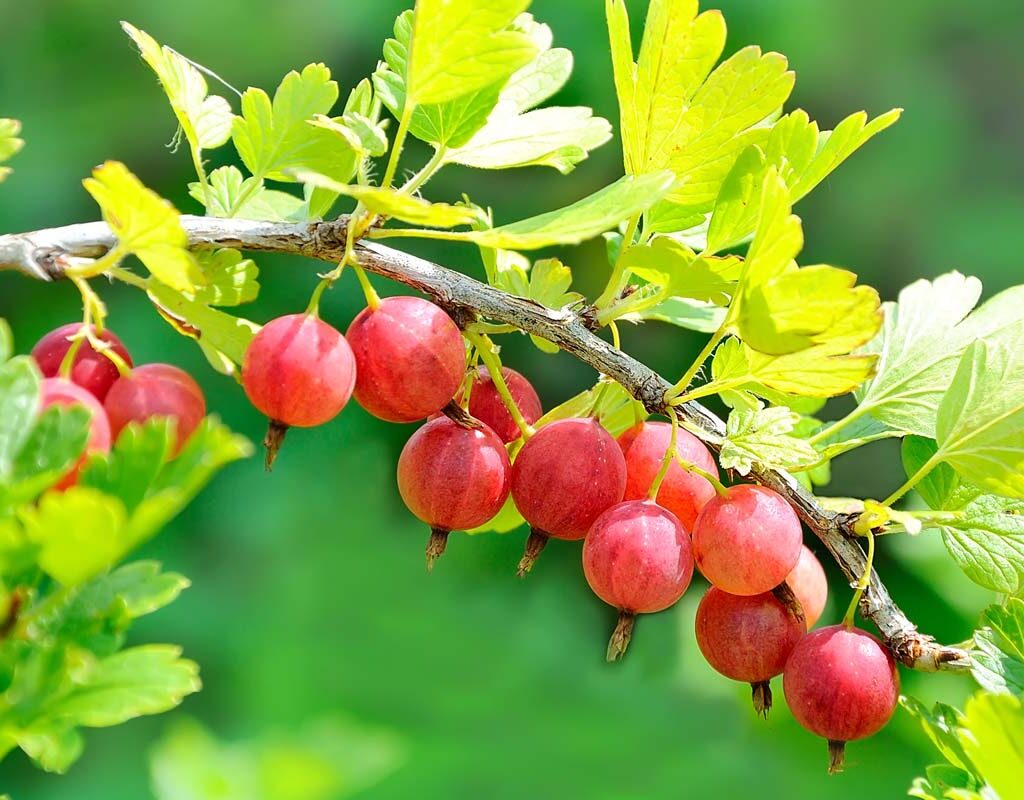
Propagating Gooseberries
Once your bush is established, you can easily propagate new plants through:
Hardwood Cuttings:
- Take 8–10 inch cuttings in late fall.
- Plant them in a sheltered nursery bed or pot.
- Leave them for a year before transplanting.
Final Thoughts
Gooseberries are a delightful addition to any backyard — attractive, productive, and wonderfully versatile in the kitchen. With just a bit of preparation and care, you’ll be rewarded with lush harvests of vitamin-rich berries for years to come.
Whether you crave tart preserves, fresh garden fruit, or simply love growing something a little different, gooseberries deserve a prime spot in your backyard garden.

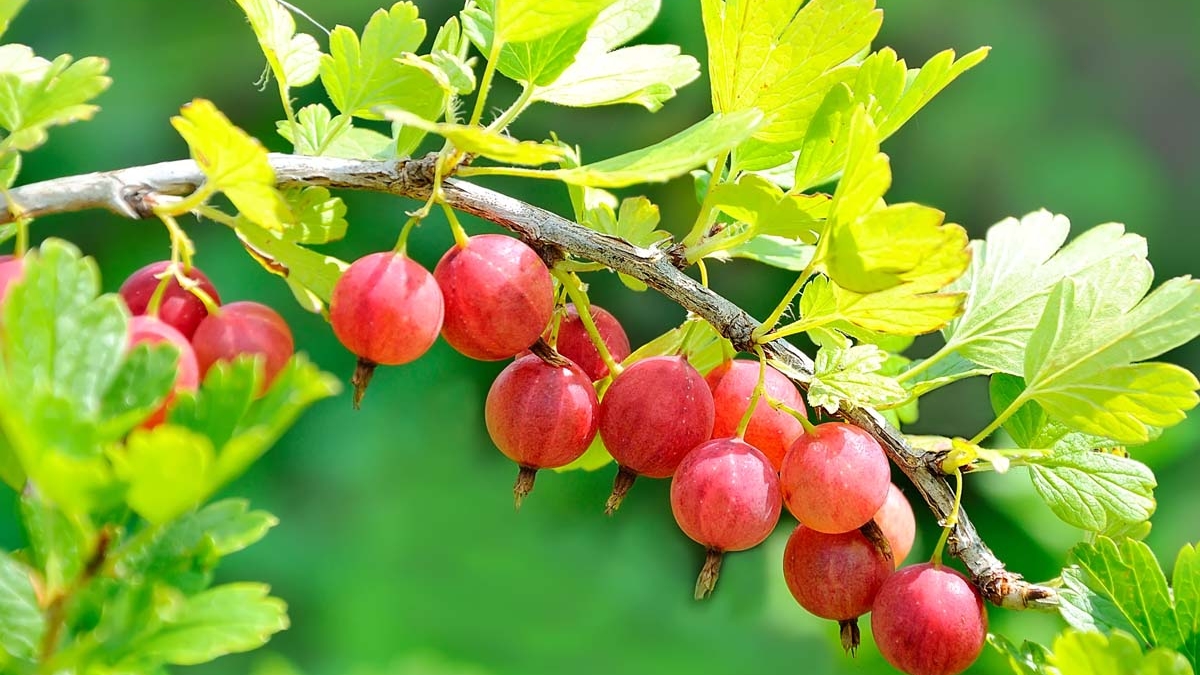




Leave A Comment